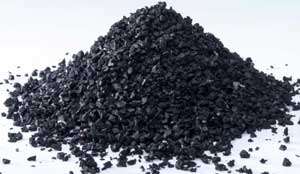End-of-life tyres (ELT) recycler, Pyrum Innovations and Unitank Betriebs have tied up in a Memorandum of Understanding on the joint construction, operation and maintenance of pyrolysis plants for the recycling of end-of-life tyres, based on Pyrum’s patented pyrolysis technology.
The non-binding Memorandum of Understanding provides for the construction of up to ten plants in the EU by 2030.
Each of these will have at least three pyrolysis reactors with an average capacity of 20,000 tonnes/year of end-of-life tyres. Pyrum and Unitank intend to build the first plant in Germany.
The final investment decision is to be made in 2023, with commercial operation of the first plant starting 24 months later, i.e. probably towards the end of 2025.
The 20,000-tonne/year recycling capacity represents a significant expansion of the current capacities of Pyrum, with its plant in Dillingen/Saar is currently being expanded from one to three production lines. Construction work is progressing rapidly despite the generally tight supply situation.
Commissioning of the new tyre shredding plant is scheduled for the end of October 2022. Initial commissioning work on the entire plant is scheduled to start by the end of the current year.
In addition, in July Pyrum formed a joint venture with the companies MCapital GmbH, Textor GmbH and Auer Holding GmbH for the construction and operation of a further 20,000 tonne pyrolysis plant in Straubing (Bavaria). The companies have already secured the property and signed a so-called pre-engineering contract, which essentially provides for the preparation of the relevant approval documents.
Meanwhile in related news, Pyrum says it has for the first time obtained a determination of the CO2 savings of its pyrolysis process as part of a “Life Cycle Assessment” (LCA, eco balance) by the German Fraunhofer Institute for Environmental, Safety and Energy Technology.
The results once again demonstrate the sustainable efficiency of the Pyrum technology, it adds. Compared to the use of fossil raw materials, Pyrum’s process saves 747 kg CO2 equivalent per tonne of ELT; if the use of the waste heat produced is included, as Pyrum is already applying, even 965 kg CO2 equivalent are saved per tonne of ELT.
By comparison, the current recycling mix in Germany achieves savings of 561 kg CO2 eq. per tonne of used tyres. In comparison, Pyrum performs up to 72% better.
The current recycling mix for ELT in Germany is made up of material recycling (market share 52%) and the incineration of used tyres in cement plants (42%) and refuse derived fuel (RDF) power plants (6%).
The infill method, the recycling of used tyres for the production of, for example, playground flooring or sports fields from rubber granulate, also achieves large CO2 savings of 778 kg CO2 eq. per tonne of ELT.
However, the Pyrum’s pyrolysis process including the use of waste heat exceeds the savings by 187 kg CO2 -eq. per ton of used tyres. In addition, the results of the Fraunhofer Institute confirm that the market potential of the infill method is clearly limited – at the moment it comes to a maximum market share of 52%, which can hardly be expanded any further. In addition, pyrolysis can also keep the materials in the loop over several life cycles.
RDF power plants, which currently dispose of 6% of ELT in Germany, produce as much as 164 kg more CO2 eq. per tonne of used tyres than power plants using fossil fuels. When used tyres are incinerated in cement plants, the CO2 saving is 395 kg CO2 eq. per tonne of ELT.

